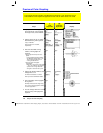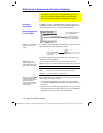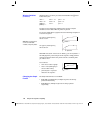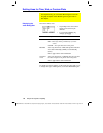
Chapter 9: Sequence Graphing 139
09SEQUEN.DOC TI-89/TI-92 Plus: Sequence Graphing (English) Susan Gullord Revised: 02/23/01 10:59 AM Printed: 02/23/01 2:14 PM Page 139 of 14
Chapter 9:
Sequence Graphing
Preview of Sequence Graphing ............................................................ 140
Overview of Steps in Graphing Sequences......................................... 141
Differences in Sequence and Function Graphing.............................. 142
Setting Axes for Time, Web, or Custom Plots.................................... 146
Using Web Plots...................................................................................... 147
Using Custom Plots................................................................................ 150
Using a Sequence to Generate a Table................................................ 151
This chapter describes how to graph sequences on the
TI
-
89 / TI
-
92 Plus
. Before using this chapter, you should be familiar
with Chapter 6: Basic Function Graphing.
Sequences are evaluated only at consecutive integer values. The
two general types of sequences are:
¦
Nonrecursive
— The
n
th term in the sequence is a function
of the independent variable
n
.
Each term is independent of any other terms. In the following
example sequence, you can calculate
u(5)
directly, without
first calculating
u(1)
or any other previous term.
u(n) = 2
ù
n
for
n = 1, 2, 3, ...
u(n) = 2
ù
n
gives the sequence
2, 4, 6, 8, 10, ...
¦
Recursive
— The
n
th term is defined in relation to one or
more previous terms, represented by
u(n
ì
1)
,
u(n
ì
2)
, etc. In
addition to previous terms, a recursive sequence may also be
defined in relation to
n
(such as
u(n) = u(n
ì
1) + n
).
In the following example sequence, you cannot calculate
u(5)
without first calculating
u(1)
,
u(2)
,
u(3)
, and
u(4)
.
u(n) = 2
ù
u(n
ì
1)
for
n = 1, 2, 3, ...
Using an initial value of 1:
u(n) = 2
ù
u(n
ì
1)
gives the sequence
1, 2, 4, 8, 16, ...
The number of initial values you need to specify depends on
how deep the recursion goes. For example, if each term is
defined in relation to the previous two terms, you must specify
initial values for the first two terms.
9
Note: A recursive sequence
can reference another
sequence. For example,
u2(n) = n
ñ
+u1(n
ì
1).
n is always a series of
consecutive integers,
starting at any positive
integer or zero.
The first term is undefined
since it has no previous term.
So you must specify an initial
value to use for the first term.


















